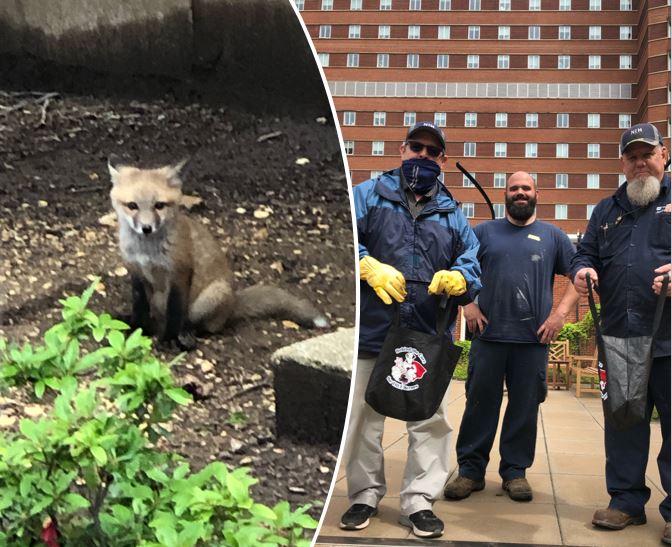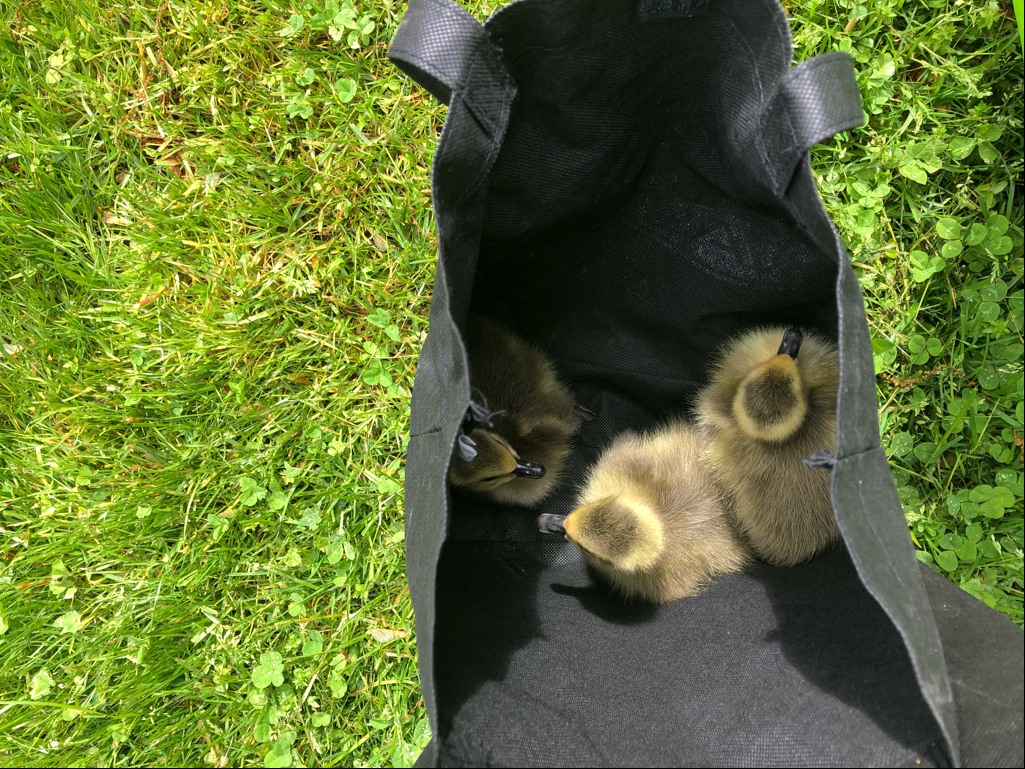Recently, Division of Veterinary Resources (DVR) Veterinarians, Dr. Michael Eichner and Dr. Lyn Colenda and DVR/ORS Facility Manager, Kelly Prevost, all members of the NIH Wildlife Veterinary Volunteers, responded to a call from the NIH Police about a sighting of a den of foxes at the entrance to Building 30, which houses the National Institute of Dental and Craniofacial Research at the Bethesda Campus.

Three foxes were seen and had burrowed under the concrete slab to the entrance of the building. There are two holes on either side of the slab that the animals can enter and exit. The entrance to the den on the south side has been marked off with yellow Police "Do Not Cross" tape, to prevent people from getting too close. Both Red Foxes and Gray Foxes are commonly found in Maryland. Red foxes burrow dens in the ground, whereas gray foxes build dens in dense brush or cavities in stumps and trees. They both will usually have 4-5 kits or pups.
Washington Post columnist Theresa Vargas reported that across the world, there have been unexpected sightings of animals that are now venturing into new places as people stay inside to avoid spreading the novel coronavirus that has caused a global pandemic. Wild animals in the Washington region have no doubt noticed quieter streets with fewer wheels to dodge. That has probably caused some to grow bolder and venture out farther than they might have otherwise.
Samantha Hopkins, a member of the Maryland Department of Natural Resources Wildlife Response Staff for Montgomery County was contacted and offered information about foxes. According to Hopkins, these foxes appear to be 6 weeks of age. Typically fox kits will leave the nest for good and seek their own place around this age. Once gone, the den can be filled back in with dirt, if necessary. Relocation of the foxes should not be attempted, mainly because of the potential for rabies, but a USDA permit is required to handle them.
By the time NIH Staff return to campus, the fox den should be vacant. In the meantime, enjoy them from a distance.

In addition to the foxes, we had the annual hatching of goose eggs on the Building 10 Library roof. For the last three years, a pair of geese have returned to build their nest on the roof and lay their eggs. Dr. Tannia Clark, Animal Program Director for NHGRI and several staff members from the Office of Research Facilities and ORS were able to rescue the chicks and their parents and relocate them to the lawn at the South Entrance of Building 10. Six chicks were rescued and relocated. Thanks for everyone's assistance in keeping wildlife safe on the NIH campus. Remember to call (301) 496- 5685 or 311 (24 hours a day) to report any sightings of injured or threatened wildlife on campus to the NIH Police and NIH Wildlife Veterinary Volunteers and a member will investigate.
